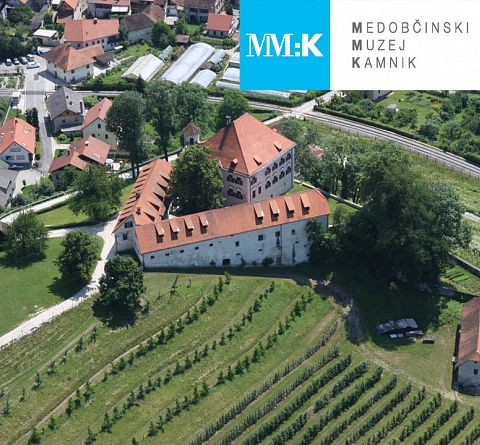Museum stories
Chair no. 14, beech wood, around 1910
Michael Thonet (1796-1871) was a man who, through his invention, brought together European and even world countries. His attempts to bend wood began in the 1830s. In 1859, he invented and made a chair no. 14, its most successful sales item. It was designed for mass production and by 1930 it was ...
Read more
Read more
Relief with an angel carrying a coat of arms, around 1490
In the already known written documents, the citizens of Kamnik were mentioned for the first time in 1229. An important turning point in the city self-government was the year 1489, when Emperor Friderik III. allowed the Kamnik citizens free election of city judges. After the issue of privilege ...
Read more
Read more
The assassination of innocent children, beehive painting, wood, 1869
A biblical motive for the killing of innocent children in Bethlehem is beehive painting. King Herod commissioned the assassination of all the children in Bethlehem, because he wanted to get rid of Jesus from the path, which the wise men from the East labelled him as "the new born king of the ...
Read more
Read more
Pentateuch (Moses' books), 1578
It is one of the few preserved Protestant prints in Slovenia. Another one is also kept at the Franciscan monastery in Kamnik. Only six of them are preserved in the world, this was found by Josip N. Sadnikar in Kneže in Carinthia. It was published by printer Mandelc in Ljubljana as an experiment ...
Read more
Read more
Jakob Savinšek, Pregnant, patinated plaster, 1949
The work Pregnant dated in the year 1949 and shows the female figure with a small oval head and a broadly rounded body. On the tense abdomen, the resting hands indicate the state of expectation of the depicted woman. In this statue Savinšek abandoned all the details that would hinder the ...
Read more
Read more
Buckets, bronze, Suhadole near Komenda, 1st century
The burial was removed from one piece of bronze sheet and finished on a lathe. Iron attachments were attached to the mouth. Handles of buckets were also iron. The buckets were repaired several times with larger or smaller pieces of sheet metal, which is basically attached to the rivets. The bucket ...
Read more
Read more
Decorative plate, ceramics, around 1900
Decorative plate with a motif of flowers with butterfly, slightly embossed on a gray relief background. At the bottom of the brand Schütz Cilli 619. The Schütz family began producing ceramics in 1852. The family business was located in Olomoucani near Blansko in Moravia. The carriers of the ...
Read more
Read more
Ernst Mayer, Castle Zaprice, watercolour, around 1880
Ernst Mayer was born in Himmelberg in today's Austrian region of Carinthia on May 28, 1839, and died in Rijeka in Croatia on February 14, 1926. He studied at "Tehnikum" in Graz and in Vienna and at the cadet institute in Venice. He was a cadet of the first rank of the Austrian Navy. In 1863, as a ...
Read more
Read more
The leather’s guild mugs, tin, 1725
A typical form of drinking tin for special occasions, widely used in the 17th and 18th centuries, was guild mugs. They were used at special guild ceremonies, such as the reception of an assistant among the masters. In the Intermunicipal museum Kamnik, we also store, among others, guild mugs used ...
Read more
Read more
Seals for salted cheese »trnič«, Velika planina, first half of the 20th century
The fonts are elongated wooden seals with engraved symbols and ornaments. With them, the herdsmen were pushed into a trunk, a special type of strongly salted cheese, which they shaped into clumps similar to onions and above pointed. Still fresh cheese was decorated with a print of wooden seals. ...
Read more
Read more



